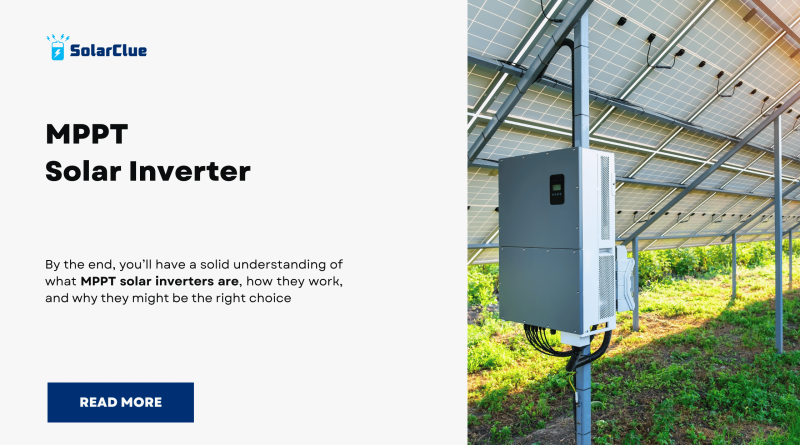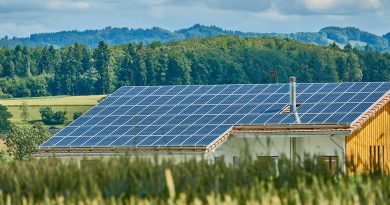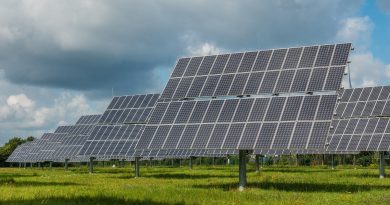MPPT Solar Inverter 24V
If you’ve ever thought about harnessing the sun’s energy for your home or gadgets, you might have come across the term “MPPT solar inverter.” It sounds technical, right? But don’t worry! In this blog, we’ll break it down in simple terms, especially focusing on 24V systems. By the end, you’ll have a solid understanding of what MPPT solar inverters are, how they work, and why they might be the right choice for your solar energy needs.
Table of Contents
- 1 What is an MPPT Solar Inverter?
- 1.1 Why Use an MPPT Solar Inverter?
- 1.2 Basics of Solar Inverters
- 1.3 Step 1: Monitoring the Solar Panels
- 1.4 Step 2: Adjusting the Load
- 1.5 Step 3: Converting the Power
- 1.6 Comparison of Inverter Types
- 1.7 1. Increased Energy Harvesting
- 1.8 2. Better Performance in Low Light
- 1.9 3. Adaptability to Different Conditions
- 1.10 4. Longer Lifespan
- 1.11 5. Monitoring Capabilities
- 1.12 Considerations When Choosing an MPPT Solar Inverter
- 1.13 1. Size and Capacity
- 1.14 2. Quality and Brand
- 1.15 3. Installation and Maintenance
- 1.16 4. Compatibility with Other Equipment
- 1.17 Residential Solar Systems
- 1.18 Off-Grid Systems
- 1.19 RV and Mobile Applications
- 1.20 1. What is the difference between MPPT and PWM inverters?
- 1.21 2. Can I use an MPPT solar inverter with a 12V battery system?
- 1.22 3. How much energy can an MPPT solar inverter save me?
- 1.23 4. Do I need a professional to install an MPPT solar inverter?
- 1.24 5. How do I monitor the performance of my MPPT solar inverter?
What is an MPPT Solar Inverter?
To start off, let’s clarify what we mean by “MPPT.” MPPT stands for Maximum Power Point Tracking. In a nutshell, it’s a technology used in solar inverters to maximize the energy you can get from your solar panels.
Why Use an MPPT Solar Inverter?
Solar panels don’t always produce the same amount of power. Their output can vary based on sunlight conditions, temperature, and other factors. An MPPT inverter continuously adjusts the electrical load on the solar panels to ensure they’re always operating at their maximum power point, hence the name.
Now, let’s dive deeper into how this works, especially in a 24V system.
Basics of Solar Inverters
Before we go further, it’s important to understand what a solar inverter does. When solar panels generate electricity, they produce direct current (DC) power. Most appliances in our homes run on alternating current (AC) power. This is where solar inverters come in: they convert the DC power from the solar panels into AC power that can be used in our homes.
Types of Solar Inverters
There are three main types of solar inverters:
- String Inverters: These are the most common type. They connect multiple solar panels in a series. If one panel underperforms, it can affect the whole string.
- Microinverters: These are small inverters attached to each panel. They optimize the output of each panel individually, which can be advantageous if some panels receive more sunlight than others.
- MPPT Inverters: As we discussed, these inverters specifically focus on extracting the maximum power from solar panels.
For our discussion, we’ll focus on MPPT solar inverters operating on a 24V system.
Why Choose a 24V System?
You might be wondering why we’re specifically looking at 24V systems. Here are a few reasons:
- Efficiency: A 24V system is generally more efficient than a 12V system, especially when powering larger appliances or systems.
- Reduced Losses: Higher voltage means lower current for the same power, which reduces energy losses in the wiring.
- Versatility: Many solar appliances and batteries are designed for 24V systems, making them easier to integrate.
How MPPT Solar Inverters Work
So, how does an MPPT solar inverter actually work? Let’s break it down into simpler steps:
Step 1: Monitoring the Solar Panels
The inverter constantly monitors the voltage and current output from the solar panels. It’s always looking for that sweet spot where the power output is at its maximum.
Step 2: Adjusting the Load
If the conditions change—say, if a cloud passes over the panels—the inverter will adjust its settings to find the new maximum power point. This means it’s constantly working to ensure you get the most energy possible.
Step 3: Converting the Power
Once it identifies the optimal power point, the inverter converts the DC power from the panels to AC power for your home.
Comparison of Inverter Types
| Feature | String Inverter | Microinverter | MPPT Inverter |
|---|---|---|---|
| Cost | Generally lower | Higher cost | Moderate cost |
| Efficiency | Depends on weakest panel | High for individual panels | High with optimization |
| Installation | Simpler | More complex | Moderate complexity |
| Best Use | Residential, large arrays | Small arrays, complex roofs | Any solar setup |
Benefits of Using an MPPT Solar Inverter
Now that we understand how MPPT solar inverters work, let’s explore their benefits:
1. Increased Energy Harvesting
The most significant advantage is the ability to extract maximum energy from your solar panels. This means more energy for your home and potential savings on your electricity bills.
2. Better Performance in Low Light
MPPT inverters perform better in low-light conditions compared to standard inverters. This means that even on cloudy days or during early mornings and late afternoons, you’re still getting a good amount of power.
3. Adaptability to Different Conditions
Whether you’re in a hot climate or a colder one, MPPT inverters adjust to temperature variations, ensuring optimal performance.
4. Longer Lifespan
High-quality MPPT inverters are built to last. They often come with warranties and are designed to withstand harsh environmental conditions.
5. Monitoring Capabilities
Many MPPT inverters come with monitoring systems that allow you to check your energy production in real-time. This feature can be super helpful for understanding your energy needs and making adjustments.
Considerations When Choosing an MPPT Solar Inverter
While MPPT solar inverters have many benefits, there are a few things to consider when choosing one:
1. Size and Capacity
Make sure to choose an inverter that matches your solar panel setup. The capacity should be able to handle the maximum output from your panels.
2. Quality and Brand
Investing in a reputable brand can save you from future headaches. Look for warranties and customer reviews to ensure you’re making a sound investment.
3. Installation and Maintenance
Consider whether you’ll be installing the inverter yourself or hiring a professional. Also, think about ongoing maintenance and whether the inverter has user-friendly monitoring features.
4. Compatibility with Other Equipment
If you have batteries or other solar components, ensure that your MPPT inverter is compatible with them. This will make your entire solar setup work seamlessly.
Real-World Applications of MPPT Solar Inverters
Now, let’s look at some practical applications of MPPT solar inverters:
Residential Solar Systems
Homeowners are increasingly turning to solar energy. MPPT inverters help them maximize their solar production, making it a popular choice for residential systems.
Off-Grid Systems
For those living off the grid, having a reliable power source is crucial. MPPT inverters ensure that even in less-than-ideal conditions, you’re still generating power.
RV and Mobile Applications
If you’re into camping or traveling in an RV, MPPT solar inverters can be a game changer. They can efficiently charge batteries even in varying sunlight conditions, providing you with power wherever you go.
Conclusion
In conclusion, MPPT solar inverters for 24V systems are a smart choice for anyone looking to harness solar energy efficiently. They offer numerous benefits, from maximizing energy output to providing reliable power even in challenging conditions. Whether you’re considering solar for your home, an off-grid setup, or an RV, understanding how these inverters work can help you make informed decisions.
Remember, the world of solar energy can seem overwhelming at first, but with a little knowledge, you can navigate it with ease. If you’re thinking about diving into solar energy, an MPPT solar inverter could be just what you need to kickstart your journey.
Visit SolarClue® to see the best Solar Inverters. SolarClue® actively sells solar energy products at discounts of up to 50% on its online marketplace.
FAQs
1. What is the difference between MPPT and PWM inverters?
MPPT (Maximum Power Point Tracking) inverters are more efficient than PWM (Pulse Width Modulation) inverters, especially in varying sunlight conditions. MPPT inverters continuously adjust to find the optimal power output, while PWM inverters maintain a constant output.
2. Can I use an MPPT solar inverter with a 12V battery system?
Yes, but it’s essential to ensure that the inverter is compatible with the voltage of your battery system. Many MPPT inverters support both 12V and 24V configurations.
3. How much energy can an MPPT solar inverter save me?
The amount of energy saved varies based on several factors, including your solar panel setup, location, and energy consumption. However, many users report significant improvements in energy production with MPPT inverters.
4. Do I need a professional to install an MPPT solar inverter?
While some handy individuals may be able to install it themselves, hiring a professional is recommended to ensure proper setup and integration with your solar system.
5. How do I monitor the performance of my MPPT solar inverter?
Most MPPT inverters come with monitoring systems that allow you to track performance via a smartphone app or a web interface, providing real-time data on energy production.




